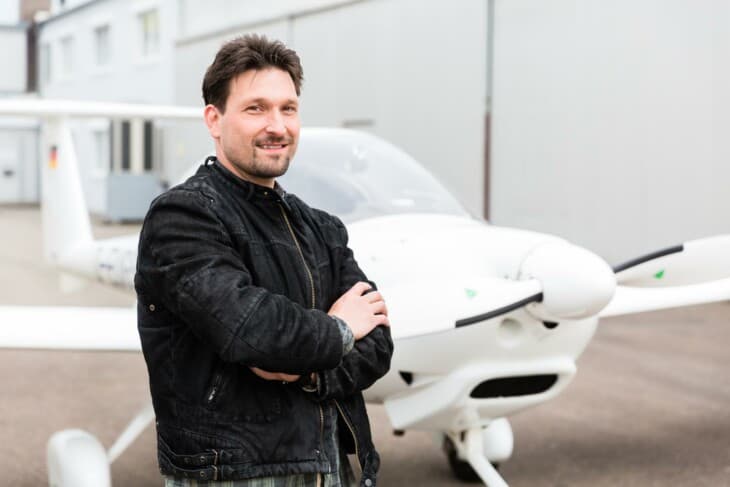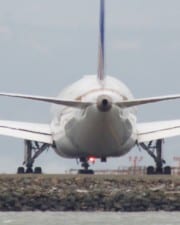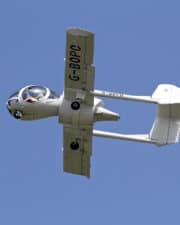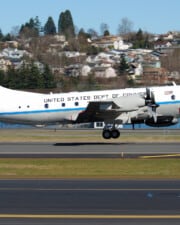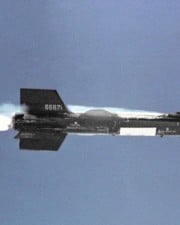How to buy your own plane? After gaining your wings, the first thing most pilots do (after celebrating of course) is look at getting their own aircraft. The process, however, can be quite daunting for even the most experienced pilots and aviators.
That being said, there are seven ways a new pilot, groups of pilots, or potential aircraft operator can go about buying their own plane. It’s worth noting that not every way may be useful for you, and each different option comes with its own set of associated costs, as well as pros and cons.
In no particular order, these are the seven main ways you can buy your own plane.
Option 1: Shares
With even the cheapest aircraft costing tens of thousands of dollars, it’s not surprising to imagine that most pilots aren’t willing to spend that on something they’ll fly in for maybe 100 hours maximum per year.
Instead, it makes far more sense to team up with a group of other pilots and buy their aircraft together.
Aside from being a cheaper way to buy an aircraft of their own, purchasing a share of an aircraft also insulates pilots from the costs associated with aircraft ownership. Whilst a $30,000 engine overhaul might be enough to near-bankrupt a single pilot, when split between four, six or even ten pilots, the engine overhaul becomes far more affordable.
Similarly, allowing multiple pilots to use the aircraft whenever they want help to reduce the annual operating costs of the aircraft, as whilst one pilot might only fly 50 hours per year, when multiplied across many pilots, the average fixed costs are much lower.
Whilst such arrangements have long been informal, often between close friends or sometimes even family members, the arrangements are now handled through the use of a legally-registered company, which owns the aircraft outright.
In turn, each co-owner owns an equal share of the company, and is thus liable to pay their share of the aircraft’s annual costs.
Option 2: Through a Broker
Traditionally the most common way to acquire an aircraft, aircraft brokers act as middlemen, bringing a buyer and a seller together and charging a fee for this service.
Acquiring an aircraft through a broker is a relatively simple process: You contact them and tell them what you’re looking for (aircraft type, age range, price etc.)
They then use their connections in the industry to match up your requirements with aircraft currently for sale.
They’ll then go with you to view the aircraft in person. Many brokers have a qualified aircraft mechanic who inspect the aircraft to let you know of any problems with it as a part of their standard fee.
Once you’ve selected an aircraft you like, they’ll then take care of all the behind-the-scenes administration, including negotiating price, drawing up a sale agreement, escrow as well as things like helping you register the aircraft to yourself, answering any and all of your questions along the way.
Option 3: Going Alone
With the advent and mass popularization of the internet, brokers and private sellers alike now have another avenue for marketing the aircraft they wish to sell.
There are literally hundreds, if not thousands, of websites dedicated to the sale of used aircraft.
Some, like Hangar67.com and Controller.com, focus on all types of aircraft, including general aviation (GA) aircraft, project aircraft warbirds, private jets and even used airliners!
Others, however, are more niche-focused, such as Trade-a-Plane.com, which largely focuses on GA aircraft, or AvBuyer.com, which largely focuses on higher-end fixed and rotary aircraft.
To find the aircraft you are looking for, it’s simply a matter of scrolling through these sites to find aircraft that fit your requirements and budget. Aircraft listed on these sites are often listed by professional aircraft brokers/dealers whilst some are listed by their owners.
Once you’ve found a few aircraft that you like, it’s now only a matter of reaching out to them to agree a time to view the aircraft in person, get it checked by a qualified aircraft mechanic, and take it for a test flight (assuming that is offered by the owner/broker; it isn’t always on some older aircraft).
Assuming everything goes well, all you need to do is agree on a price, let the lawyers draft a sale agreement, and deposit the money in a secure escrow account to be released once the agreement has been signed!
Option 4: Restoration
Each year, hundreds of aircraft – often older models and historic aircraft types – fail their FAA-mandated inspections. Many of these aircraft will never fly again and end up in storage or the scrapyard.
This presents an opportunity for those looking to acquire their own aircraft.
If they have the right background – or the money to pay those who do – buying one of these aircraft before they end up in storage or the scrapyard and restoring them can be a great way to acquire an aircraft with historic significance at a potential discount.
Many websites, such as Trade-a-Plane and Hangar67, have sections for these aircraft, all of which are in various states of disrepair.
Upon finding and buying a restoration project aircraft that meets what you are looking for, restoration can take anywhere from a few months to several years and even decades depending on the state of disrepair and the time you’re willing to dedicate to the project.
It is worth noting, however, that not every aircraft can be restored.
Many parts for old aircraft were discontinued decades ago, so finding replacements is both expensive and time-consuming. Other aircraft may be in such poor shape that it doesn’t make financial sense to restore it and instead just buy an already airworthy one.
Either way, it’s worth checking with the help of a qualified aircraft mechanic what work needs doing and working out rough costs and timelines before you purchase any restoration project aircraft.
Option 5: Surplus
When militaries retire their aircraft, they often face one of three fates: storage, sale to another military or dismantling.
Although most militaries sell their surplus aircraft to other militaries, they do occasionally sell to private individuals or companies, though only in certain circumstances.
Most private individuals able to acquire surplus military aircraft are former military pilots themselves, with there being an unofficial rule that they have to have years of stick time on that aircraft and a stellar flying record to back it up.
Likewise, most companies acquiring surplus military aircraft are either cargo operators acquiring cargo aircraft, or airshow teams acquiring training or former combat aircraft. In any case, they are usually run by former military pilots or have other military connections for the same reasons as above.
To prevent misuse – both accidental and deliberate – militaries will strip all aircraft they sell to non-military entities of their weapons systems, military spec radios and other sensitive equipment before they can take possession of the aircraft.
Option 6: Direct From The Factory
All of the above options focus on acquiring an aircraft secondhand. However, not all pilots will necessarily want a used aircraft; some may prefer the amenities of a new aircraft. Plus, you can’t beat that new plane smell.
Naturally, the only way to acquire a brand new aircraft is to get it from the factory.
To order a brand-new aircraft, it could be as simple as ringing up the manufacturer’s sales team and informing them you wish to purchase one of their aircraft and giving them your banking information.
In other cases, it might be a matter of ringing them to book a test flight, where they fly a test model to your airfield for you to check out before you purchase.
If the order is for multiple aircraft, or is with a larger aircraft manufacturer like Boeing, it may be simply a matter of ringing up and booking a time to meet a high ranking executive (usually a VP or similar C-Suite Executive), viewing a show model in person and going for a test flight before purchasing.
Regardless, buying directly from the factory is as easy as going on the manufacturer’s website and calling them up.
Option 7: Buy Production Positions
If you choose to go down the route of Option 6, you will find that you have a wait time that is anywhere from a few weeks to several years depending on how popular the aircraft model you want to buy is and the production capacity of the aircraft manufacturer who makes it.
If the model you are interested in has a waiting list of several years, you don’t necessarily have to wait that long – there is a secondary market that helps you circumvent this somewhat: production positions.
You see, sometimes, someone places an order for an aircraft and for one reason or another can’t end up taking possession of the aircraft once it’s been built.
Rather than calling up the manufacturer and canceling the order, which often entails a hefty cancellation fee and potentially even a lifetime ban from placing orders with them, the individual can try to sell their position to a third party.
After all, until the aircraft is built and registered, it’s merely a piece of paper that says roughly when it will be built and where it will be delivered to.
Whilst this can potentially be a risky move for the seller, who generally only has a few months to sell what is, in effect, a nonexistent product (for the minute anyway), it can prove to be a godsend for a pilot looking to purchase a new aircraft without having to wait as long.
As the customer doesn’t have to wait as long to receive their new aircraft , buying a production position is generally more expensive (typically by between five and 10 percent) than buying their new aircraft directly from the manufacturer and joining the bottom of the waiting list.
Related Posts
